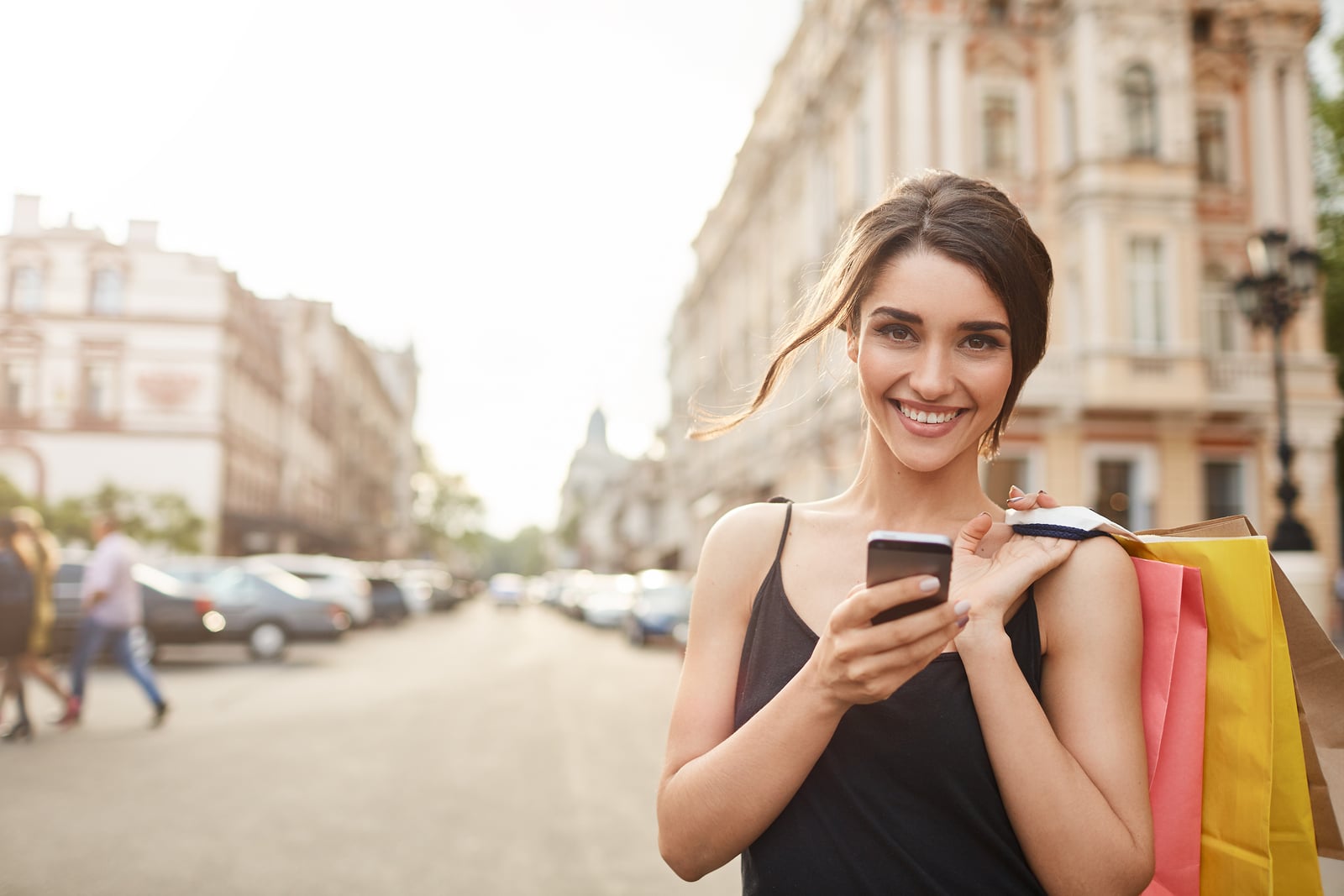How proximity marketing apps can drive traffic
With a proximity marketing app, brands, retailers or restaurants can increase store traffic and gain brand recognition when it matters most. That’s because the ability to travel with consumers and meet them in the moment of decision is a powerful tool for a company. Apps that incorporate proximity marketing allow brands to track consumer traffic patterns, develop innovative ways to drive traffic through the door, and can even drive sales. They can also be used to leverage consumer trust, get customers to interact with products, and improve marketing insights for brands.
A well-executed proximity marketing campaign is more than simple advertising, it’s a means of tracking and measuring consumers’ behavior as they travel. Mobile shopping apps, for example, allow brands to plan marketing campaigns in a way that incentivizes consumers through rewards-based programs and timely offers. Proximity marketing that uses context-based messaging, or connects consumers to a nearby location, can help ensure that a consumer remembers a brand. There are many reasons proximity marketing apps drive traffic, and each is centered around the improved connection a company can make with the consumers who use these apps.
Establishing Trust for Qualified Leads
The requirement for permissive use associated with proximity marketing also gives brands an advantage. If a customer has agreed to receive location-based messages through an app or from your brand, they’ve established a high baseline of trust, which a brand can build upon.
About 74% of consumers find it very important that they are able to control who has access to
their data. In the same vein, 76% of adults lack confidence in online advertisers’ ability to keep that data secure. Asking a consumer for permission not only to send them advertisements but also to also track their physical location is asking consumers to trust your brand. Those who opt-in to proximity marketing, then, are more qualified or likely to convert.
When a consumer gives your brand access to data via a proximity marketing app, they are signaling receptiveness to your brand’s communication. This sets the stage for you to deliver context-based messages that speak to their specific needs. And, context-based messaging is more likely engage a consumer, making your message more memorable.
Making a Bigger Impact with Context-Based Messaging
One of the major benefits of proximity marketing is that it allows a company to give more in-depth context to its marketing message. Consumers can see an advertisement for a product or a location at the very moment they’re considering a purchase. This kind of meaningful advertising results in more effective brand awareness and serves as an excellent means of moving a potential customer through the sales cycle.
Casual dining company Bloomin’ Brands—which owns such restaurants as Outback Steakhouse and Carrabba’s Italian Grill—is one company that has used proximity marketing to grow both brand recognition and sales, largely through context-based messages. The company uses geolocation tracking to promote their nearby restaurant choices—along with information like locations, hours, menus, and reviews—as the consumer is considering dining options in the area. The company targets these messages based on that consumer’s past dining behaviors, then reaches out to the potential diner with a message that offers rewards for dining at a Bloomin’ Brands restaurant. This creates a context-based message, as the consumers receive a message about dining options when they’re considering stopping at a restaurant. It also incentivizes purchase by offering a reward for stopping in.
Proximity marketing allows the company to reach consumers who are in the right mindset. Even if the consumer decides not to dine at the restaurant advertised in the mobile app marketing campaign, they’ll be more likely to remember that restaurant—and its location—than if they’d simply seen a commercial for the restaurant on television.
For location-based advertising, restaurants, and brick-and-mortar stores, context campaigns offer great traffic. CPG brands hoping to gain more traffic in the shopping aisle, however, need to take it a bit further and focus on getting consumers to interact with their products.
Engaging the User In-Store with a Proximity Marketing App
For CPG brands, driving traffic isn’t just about getting consumers into the store; it’s about getting them to go to a specific section of the store. This is the point at which there’s the greatest sales potential for a brand and the most competition since most CPG brands sit on the shelves alongside their competitors.
Getting consumers to view a certain segment of the aisle can be achieved with the help of a rewards-based proximity marketing program. It’s a strategy that Shopkick has built into its shopping rewards app. Consumers using Shopkick earn points—known as kicks—for typical shopping behaviors such as visiting certain stores, making purchases, and engaging with products. They later redeem these kicks for gift cards. This gamified strategy can turn average shopping into a fun scavenger hunt. Most importantly for brands, however, it can also drive traffic to the aisle—and to specific shelf locations.
This type of rewards system incentivizes consumers to seek out a brand’s product in the store and can have an impact on several fronts:
Interaction drives sales:
One way consumers earn rewards is by scanning the barcodes of certain products via their phone. Encouraging physical interaction with a product increases the likelihood of a sale for a brand. The ability for consumers to earn additional rewards for purchasing the product—which is already in their hand—further incentivizes sales.
Interaction improves brand recall:
Brand recall occurs when a consumer remembers a brand when it matters the most—as they’re about to purchase a product. In-store interaction with a product can foster an important psychological cue that can encourage future purchase behavior. In the consumer’s mind, the brand is now linked to the desired product and to that product’s location in the store.
For example, a consumer uses an app to earn for scanning the barcode on a bottle of nail polish, but doesn’t buy it. Later in the week, the consumer decides it’s time for a new shade. Since they already know the brand, know where it is located in the store, and know that they could potentially earn additional rewards for a purchase, they’ll be more likely to seek out that brand when they’re ready to buy.
Interaction encourages cross-sales:
A consumer using an app in-store to earn rewards for one product may choose to buy another of the brand’s products, or convert from a competitor brand, because of that interaction. Say for example that a dairy brand offered kicks for scanning its butter. After the consumer has scanned the butter, they remember they need milk and choose that brand’s milk. Offering rewards for one product in a brand’s portfolio can help gain awareness for all of them.
Using an in-store rewards system like Shopkick funnels users to specific locations within a store, increases familiarity with a brand, and improves the likelihood that a consumer will purchase a product.
It’s strategies like these, which merge the physical and digital worlds, that provide such an incredible opportunity for brands to increase brand affinity—and potentially market share. On top of that, such app-based campaigns offer insight into consumer behaviors, which brands can use to improve future marketing strategies.
Using Proximity-Based Data to Gain Insight into Purchase Behaviors
One of the benefits of proximity marketing is that companies don’t have to choose between either mobile commerce or brick-and-mortar shopping. Mobile marketing can be used to improve both online sales and to increase in-store traffic. The consumer’s mobile phone becomes their roadmap during the shopping trip, allowing brands to direct consumers to their products. At the same time, this type of marketing can give valuable insight into consumer behaviors, allowing companies to locate and capitalize on signals of purchase intent and inform future marketing plans.
Motivating consumers to seek out products:
When a brand doesn’t want to invest heavily in product placement, the ability to motivate consumers to actively seek out products is key. Consider the case of a wine brand that is experiencing low sales and that has poor shelf position. Rather than pay to improve that shelf position, the brand chooses instead to offer free rewards points just for scanning the wine’s barcode, no purchase required. This strategy can drive traffic to their shelf as well as promote consumer engagement with the brand. And, because the request—seek out wine, scan bottle—requires little time investment by the consumer it encourages a large number of scans. Brands can even experiment with the numbers to see exactly how many points it takes to get consumers to actively seek out a product in-store, all while avoiding product placement expenses.
Improved ROI:
Proximity marketing data can be used to determine whether offering rewards or discounts are more effective, and what kind of consumers are attracted to a campaign. Offering a discount often gains only a one-time sale from a new customer, who may be mainly focused on price. Providing rewards, on the other hand, may turn customers into repeat buyers. Data from proximity marketing apps that incorporate rewards can be used to justify increasing rewards marketing and reducing costly discount-based deals.
Testing demand for new product launches:
When rolling out a new product, a brand may choose to do so on a smaller scale, through pilot launches. A shopping app can provide a test market community, allowing the brand to determine whether the product and its marketing campaign is ready for a full launch, or if either needs tweaking first.
Ability to scale for expected demand:
The real-time nature of data gathered through proximity marketing gives a brand early indication of a product’s popularity within a region, and even as narrowly as by neighborhood. This allows brands to scale supply based on specific, localized demand.
Proximity marketing allows brands to travel with consumers, and the data provided during their journey helps inform the best way to communicate with them. It offers true insight that can be used to adjust a marketing message mid-campaign or increase supply based on location-specific demand. It can even be used to inform on things like supply chain decisions for CPG brands and staffing requirements for restaurants and retailers.
Proximity marketing apps allow your brand to gain greater insight into consumer behavior. By using an app that consumers trust, you extend that trust to your brand, locations, or company. You can encourage visits to a location and increase interaction with a product by offering timely, context-based messages. Not only do proximity marketing apps drive traffic to a location, they can also improve sales and, by extension, help a company grow their market share.
Shopkick leverages proximity marketing through an innovative app that helps our partners reach consumers at the right time. For more information, contact us.




 That’s true of many things in life (ahem,
That’s true of many things in life (ahem,